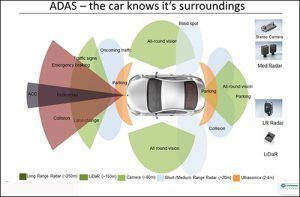The Alignment and Calibration Shoppe
The Alignment and Calibration Shoppe has the tooling, equipment and manufacturers’ instructions to ensure that your vehicle will be aligned and calibrated accurately and precisely. You can feel confident that when you drive, your vehicle’s ADAS system will perform as intended from the factory.
Services offered:
- Wheel alignments
- Steering system resets
- Advanced Driver Assistance System (ADAS) calibrations
Does my car need an alignment?
If you notice any of the following: Excessive or uneven tire wear, your vehicle drifting or pulling, a feeling of looseness or wandering, a steering wheel that is not straight, your vehicle needs an alignment. Each vehicle manufacturer has its own recommendation for how often an alignment should be checked and/or performed; however, as a general rule, you should have your vehicle's alignment checked every 10,000 miles or at least once a year.
Why does the steering system need reset after an alignment, and how is that reset performed?
More and more vehicles are being equipped with on-board driver-assist systems, ADAS, that help the driver while driving the vehicle and/or parking. Alignments change a vehicle's steering geometry and may alter what the system sensors consider to be straight ahead. Therefore, it is important that the sensors be reset to be in line with the new steering geometry of the vehicle. This ensures that the accuracy dependent sensors of the on-board systems function as intended.
Resetting the steering system sensors require an electronic correction. Our technician uses a tool that connects to the vehicle's on-board computer to evaluate and reset the sensors electronically. This operation ensures that your vehicle is repaired according to the manufacturer's specific requirements, as each vehicle's repair operation is unique to its specific VIN number.
What is an ADAS calibration? When and why is it necessary?
Many new cars are coming equipped with Advanced Driver Assistance Systems (ADAS). Some examples of ADAS are: Automatic emergency braking, Adaptive cruise control, Lane departure warning, Blind spot monitoring, Parking assist, Adaptive headlights, Automatic headlight high-beam activation and dimming. ADAS relies on a variety of sensors, located in various areas of a vehicle, to "see" what is happening around the vehicle. The most common sensors are cameras, radar, ultrasonic and steering. Some systems use information from a single type of sensor; others combine information from multiple sensors to obtain a more accurate "view". These sensors are very precisely aimed and require calibration if they are disturbed in any way.
Misaimed sensors can result from collisions, minor fender benders, etc. However, service work to the vehicle, such as an alignment, suspension repair, or a windshield replacement can all result in a need for a calibration. Failure to calibrate a sensor(s) will cause the ADAS to operate improperly or not at all.
In order to ensure all necessary sensor replacements and calibrations are performed, the shop will do a complete, diagnostic scan before repairs are started and another once repairs are completed. This will ensure that all issues have been resolved, ADAS sensor calibrations are complete and the vehicle's control systems are communicating properly before the vehicle is returned to you.
Calibrating ADAS sensors is a very precise process, requiring the technician to follow the vehicle manufacturer's calibration process accurately, step by step. Some calibrations can be done in the shop; these are called static calibrations. Dynamic calibrations require that the vehicle be driven. However, many sensors call for both to be performed.




